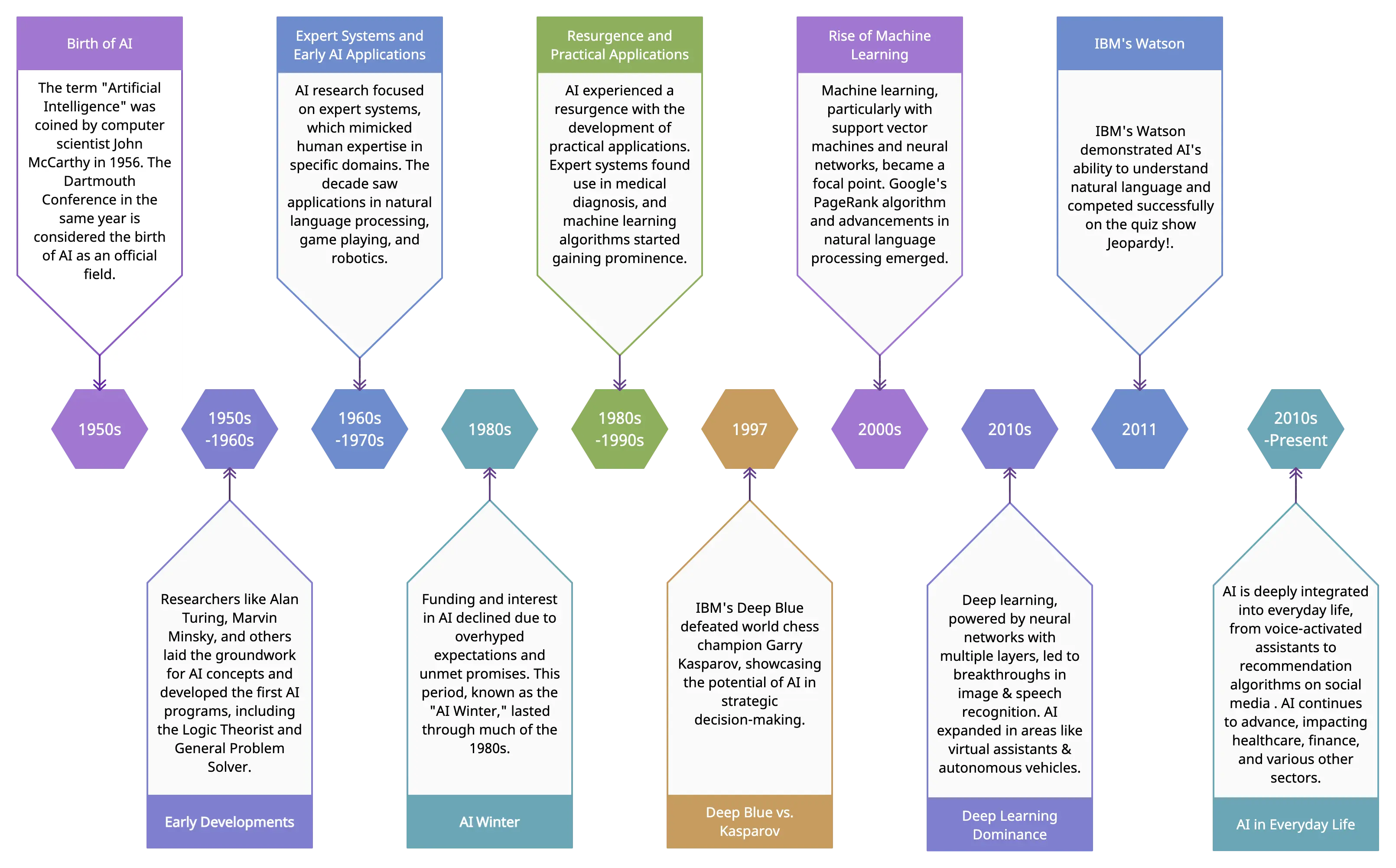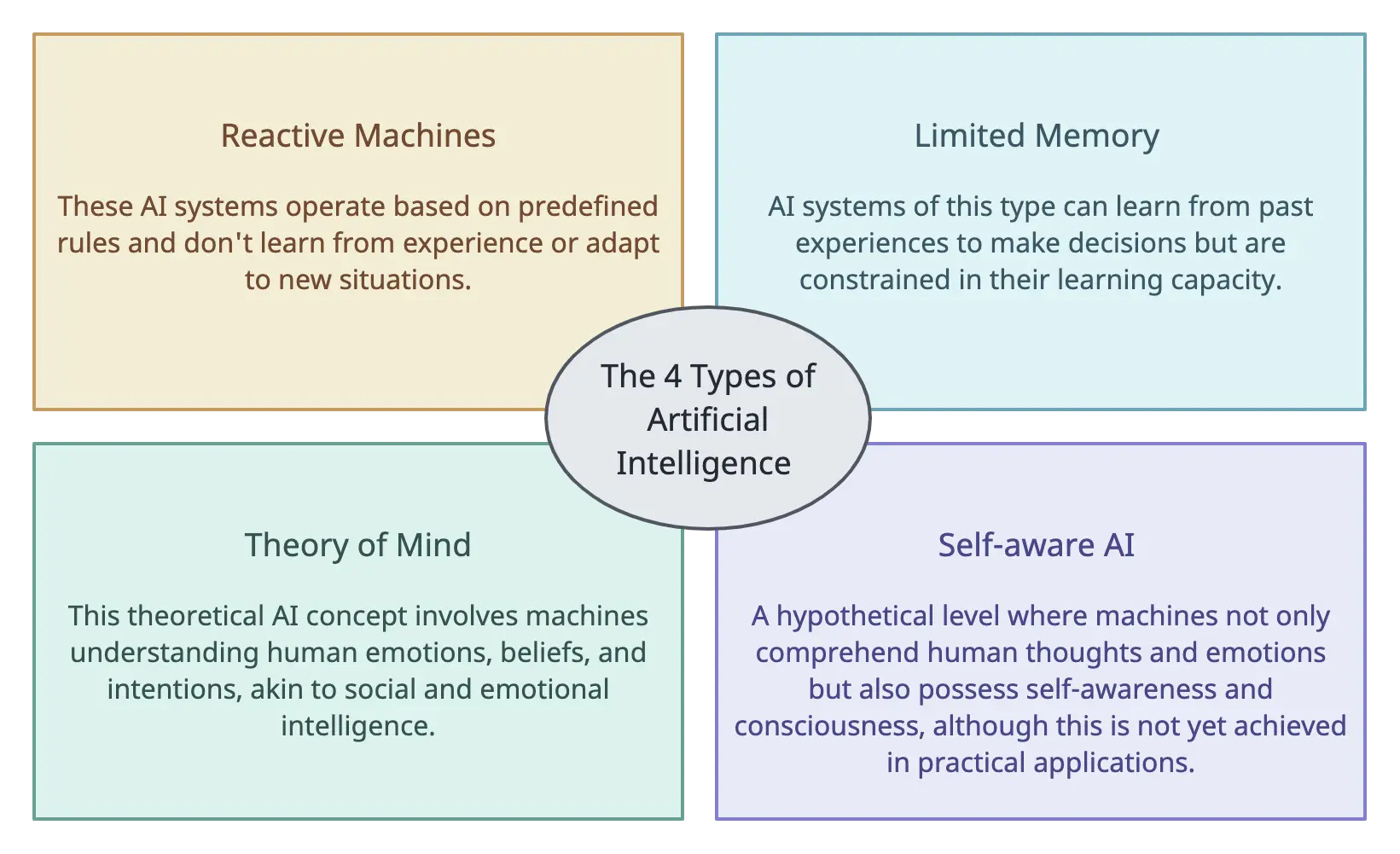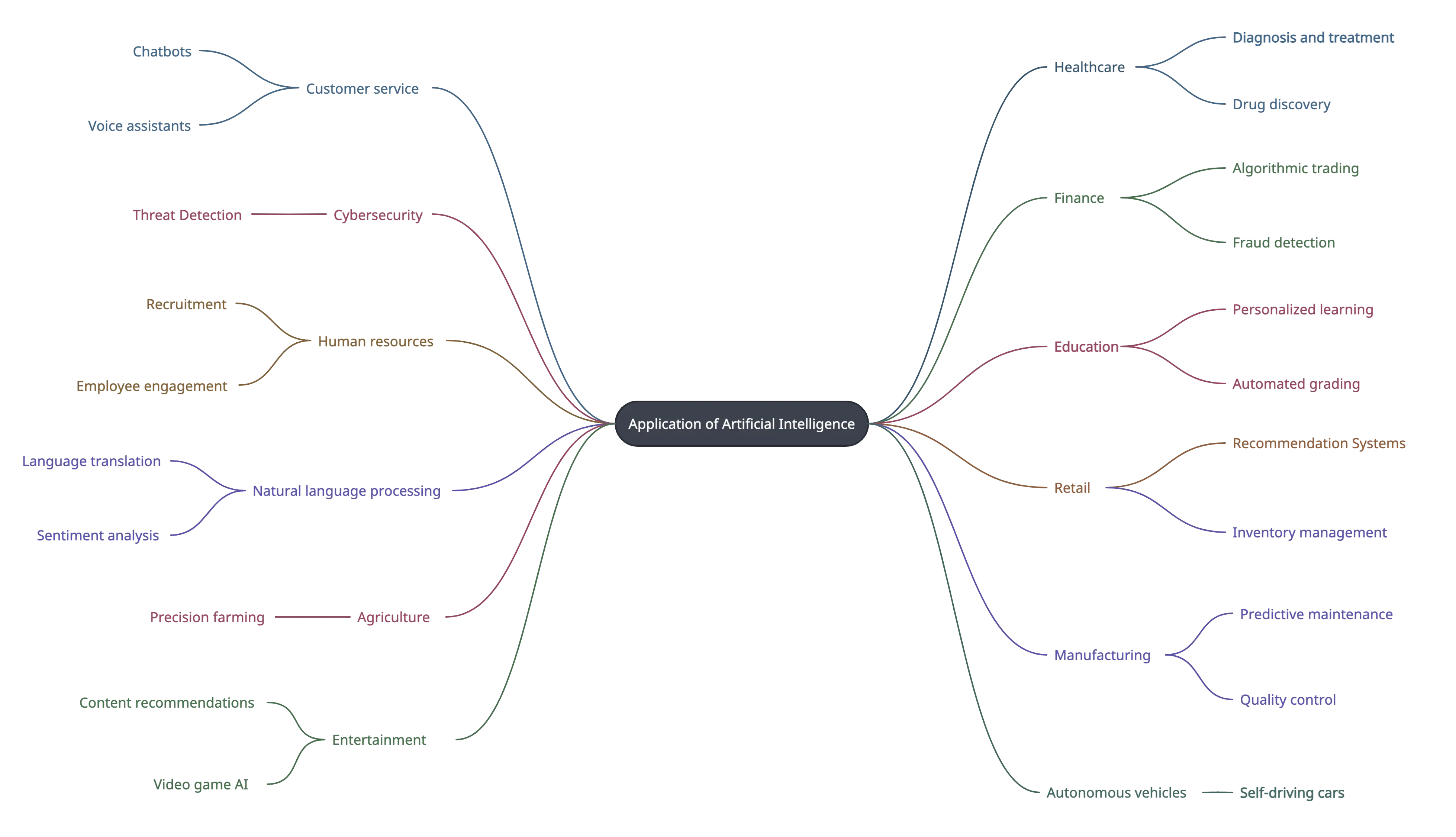A whole crop of new and improved AI tools came out in 2023, many of which completely changed the way people work. It’s important to understand AI (Artificial Intelligence) and how it shapes the landscape of modern tech in the wake of this transformative wave. The way we work is being redefined by artificial intelligence as it keeps evolving, from business to leisure.o we’re going to take a look at it in-depth, shed light on its intricacies, and show how powerful AI is becoming in this fast-paced digital world.
What is Artificial Intelligence (AI)?
Artificial intelligence (AI) is the simulation of human intelligence by machines programmed to perform tasks typically performed by humans. These tasks include learning, reasoning, problem-solving, perception, language understanding, and even interacting with the environment. They’re designed to mimic cognitive functions so they can adapt and improve over time.
AI incorporates various techniques and approaches, including machine learning, natural language processing, computer vision, and robotics. In machine learning, algorithms are trained on vast datasets so they can make predictions, recognize patterns, and improve performance without explicit programming.
History of AI

How Does AI Work?
AI works through the use of algorithms and data to enable machines to perform tasks that typically require human intelligence. The process can be broken down into a few key components:
Data input: AI systems start by being fed large amounts of data relevant to the task they are designed for. This data can include text, images, audio, or other types of information.
Training the algorithm: In the training phase, machine learning algorithms analyze and learn patterns from the provided data. The goal is to enable the AI system to make predictions or decisions without being explicitly programmed for each task.
Algorithmic processing: Once trained, the AI algorithm processes new input data and applies the learned patterns to make predictions, recognize patterns, or perform specific tasks. This phase is often referred to as the model’s inference stage.
Output or action: Based on its analysis, the AI system produces an output or takes a specific action. For instance, in image recognition, the output might be identifying objects or people within an image. In natural language processing, it could involve understanding and generating human-like text.
Feedback loop and iteration: Often, AI systems incorporate a feedback loop which evaluates the output and adjusts or retrains the algorithm to improve accuracy and performance over time. The AI can continuously improve its capabilities through this iterative process.
What is the Impact of AI in the Current World
A lot is changing in the world because of Artificial Intelligence, which is affecting a lot of aspects of our lives and transforming industries. Here are some key areas where AI has made a significant impact:
Automation and efficiency
Using AI to automate repetitive tasks, improve efficiency, and streamline workflows has revolutionized industries. For example, robotics powered by AI can handle complex tasks with precision, increasing production.
Faster decision-making
Artificial intelligence can process a lot of data quickly and make informed decisions. By providing valuable insights based on data analysis, AI helps with decision-making in fields like finance, healthcare, and business analytics.
Personalization in technology
With AI algorithms, we can get personalized experiences in technology like content recommendations on streaming platforms, targeted advertising, and voice-activated assistants. This personalization improves user satisfaction and engagement.
Healthcare advancements
There’s been a lot of progress in AI in healthcare, from diagnostics to predictive analytics to drug discovery. Using machine learning algorithms, you can identify patterns in medical data and detect diseases earlier.
Natural language processing
The ability for AI to understand and generate human language has led to chatbots, language translators, and voice-activated assistants. This has transformed the way we interact with technology and each other.
Autonomous vehicles
AI is the key to creating autonomous vehicles that can perceive their surroundings, make real-time decisions, and navigate safely. We could see a revolution in transportation with this technology.
Cybersecurity
Real-time cyber threats can be detected and dealt with effectively using AI. By analyzing patterns and anomalies, it can spot potential security breaches and protect systems.
Economic impact
A significant economic impact of AI lies in its ability to drive innovation, create new jobs, and grow the economy. Companies that leverage AI technologies often have a competitive edge in the market.
What are the 4 Types of AI?

Artificial Intelligence (AI) is typically categorized into four types based on its capabilities and functionalities.
1. Reactive Machines (Type 1)
The most basic form of AI is reactive machines. They can’t learn from experience or adapt to new situations because they’re designed for specific tasks. While these systems are great at performing a set function, they lack the capacity to learn or evolve.
2. Limited Memory (Type 2)
Limited memory AI systems can store and recall past experiences to some extent. Unlike reactive machines, they can learn from historical data and make decisions based on that information. However, their learning abilities are constrained, and they might not adapt well to new situations.
3. Theory of Mind (Type 3)
Often associated with more advanced forms of machine learning, this type of AI involves creating systems that can understand human emotions, beliefs, intentions, and other cognitive states. Even though AI systems don’t yet have a “theory of mind” like humans, progress is being made on creating social and emotional AI.
4. Self-aware AI (Type 4)
In a self-aware AI, machines not only understand human emotions and thoughts, but also have self-awareness and consciousness. As of now, self-aware AI remains a concept more commonly found in science fiction than in real-world applications. Creating machines with true self-awareness poses immense challenges and is an area of ongoing philosophical and technological exploration.
What are the Advantages and Disadvantages of Artificial Intelligence?
| Advantages of Artificial Intelligence | Disadvantages of Artificial Intelligence |
|---|---|
| By automating repetitive tasks, AI improves efficiency and frees up human resources for more creative and complex work. | AI can lead to job displacement, especially in industries where routine tasks are easily automated. It raises concerns about unemployment and reskilling. |
| AI systems can work continuously without interruptions, providing constant availability. | The AI algorithms may inherit biases from the training data, leading to unfair or discriminatory results. Making AI models bias-free is a major challenge. |
| With AI, businesses can gain valuable insights and make smart decisions quickly by processing huge amounts of data at once. | AI can analyze data and recognize patterns, but it lacks the creative and intuitive abilities of humans. |
| AI can do tasks more accurately and with more precision, especially in healthcare and manufacturing. | Privacy, surveillance, and misuse of AI raise ethical questions, so strong ethical guidelines and regulations are needed. |
| AI can reduce manual labor costs and increase operational efficiency through automation. | Over reliance on AI could lead to problems if they fail or aren’t accurate. AI systems must be reliable before they can be widely adopted. |
| AI can boost human creativity by helping with tasks like brainstorming, design, and problem-solving. | AI systems can be complex and expensive, so smaller businesses and organizations may not be able to use them. |
What are the Applications of AI?
Artificial Intelligence (AI) has a wide range of applications across various industries, revolutionizing the way tasks are performed and problems are addressed.

| Industry/ Application | AI Application |
|---|---|
| AI in Healthcare |
|
| AI in Finance |
|
| AI in Education |
|
| AI in Retail |
|
| AI in Manufacturing |
|
| AI in Autonomous Vehicles |
|
| AI in Customer Service |
|
| AI in Cybersecurity |
|
| AI in Human Resources |
|
| AI in Natural Language Processing |
|
| AI in Agriculture |
|
| AI in Entertainment |
|
Why is Artificial Intelligence Important?
In a fast-changing technological landscape, AI provides a multitude of benefits across a wide range of industries. Investing in AI is essential because it unlocks unprecedented efficiencies, automates mundane tasks, and empowers industries to make data-driven decisions at a scale never seen before.
The future promises even more integration of AI, as advancements continue to improve its predictive capabilities, problem-solving abilities, and optimization of the human potential. Businesses investing in AI can gain a competitive edge by fostering innovation, improving productivity, and staying ahead in a digitally driven global economy.
Artificial intelligence continues to evolve, and its impact on healthcare, finance, manufacturing, and other sectors will redefine how people work, create, and deal with complex problems. So, investing in AI is a smart move for businesses looking to stay ahead and make things work even better in the future.
Creately VIZ, AI for Diagramming and Visual Collaboration
While some may see AI as a tool to boost productivity or automate tasks, our team at Creately see it as more than that. We believe that how people interact with AI will spark a new wave of innovation, fast-forwarding human creativity rather than replacing it. AI, in our view, should provide momentum, make work easier, and let individuals focus on what they do best—solving problems, thinking deeply, and innovating together.
This is why we came up with Creately VIZ.
Creately VIZ is our AI-based visualization and diagramming technology that combines visual framework expertise with user data built right into our visual collaboration platform. It uses visual intelligence to transform how teams work together. At its core, Creately AI enables teams to work visually side by side with artificial intelligence, which augments and extends ideas, provides summaries, and offers new perspectives automatically.
Creately VIZ is also accessible to all Microsoft Teams users, offering a range of features designed exclusively for the platform. Through a straightforward ‘@creately’ command, users can effortlessly transform channel conversations into visuals, automate follow-ups, and improve brainstorming using AI-boosted templates.
Our focus is not just on automation but on creating a more natural and engaging work experience, where Creately AI boosts human creativity and interaction. As we embrace this new era of collaboration with Creately VIZ, it symbolizes a promising step toward more dynamic and efficient work environments.





